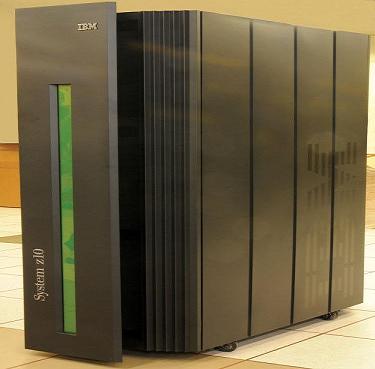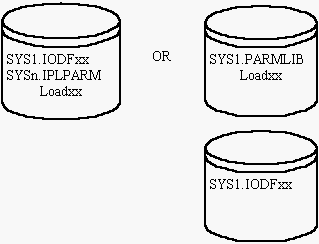 Contact Us | Sitemap |
||||
IPL of z/OS systemInitial Program LoadSystem IPLThe first IPL after system installation
Initial Program Load. The initialization procedure that causes an operating system to start operations
Cold Start:Any IPL that loads (or reloads) the PLPA, but does not preserve VIO data set pages. The first IPL after system installation is always a cold start because the PLPA is initially loaded. Subsequent IPLs are cold starts when the PLPA is reloaded either to alter its contents or to restore its contents if they were destroyed. Quick Start:Any IPL that does not reload the PLPA and does not preserve VIO data set pages. (The system resets the page and segment tables to match the last-created PLPA.) Warm Start:Any IPL that does not reload the PLPA, but does preserve journaled VIO data set pages. What happens at IPL time
1) hardware system reset 2) optional memory clear 3) issues a basic READ (CCW op code 02) to the IPL device. It reads 24 bytes into absolute location 0. on disk, op code 02 is READ IPL, which seeks to cyl 0, trk 0 and reads the data portion of record 1. This is the IPL record on a disk initialized for IPL. On tape it just reads the first physical record on the tape (assuming the tape is rewound). 4) it continues the I/O by expecting 1 or 2 additional READ CCWs at absolute location 8 (part of the IPL record just read). On disk or tape this reads record 2, which can be quite large. It is possible for this record to contain more CCWs which are executed as part of the IPL, so it is possible for the IPL hardware function to load complex code into various parts of memory. 5) at this point, no instructions have been executed. If the
I/O was successful, it loads a PSW from absolute location 0 (start of
the IPL record) and starts execution.
IPL PARMS
You can place the LOADxx member in one of the following system data sets:
SYS1.PARMLIB Consider placing LOADxx in the SYSn.IPLPARM data set. During IPL, the system looks for LOADxx in the following order:
Do not create a SYSn.IPLPARM data set unless it contains the LOADxx member that is used to configure your system. When the system finds either SYSn.IPLPARM or SYS1.PARMLIB, it expects to find a LOADxx member in the data set. If the LOADxx member specified on the LOAD parameter is not in the data set, the system loads a wait state.
IPL ProblemsThese are problems that some systems programmers have experienced. These problems are listed for reference only. Review the proper IBM documentation for any problems that you may encounter. WAIT019
Wait064
The system is now dead. The system codes indicates a program check. wait064 09.
OW36941: A WAIT064 RC09 OCCURS DUE TO ABEND0C4 IN IEAVSWCS
Wait088
How the system finds that Master CatalogThere are two sources:
|
Sponsored by 
 IBM z10 |
|||
| ||||


 Software Diversified Services, Minneapolis, MN USA
Software Diversified Services, Minneapolis, MN USA